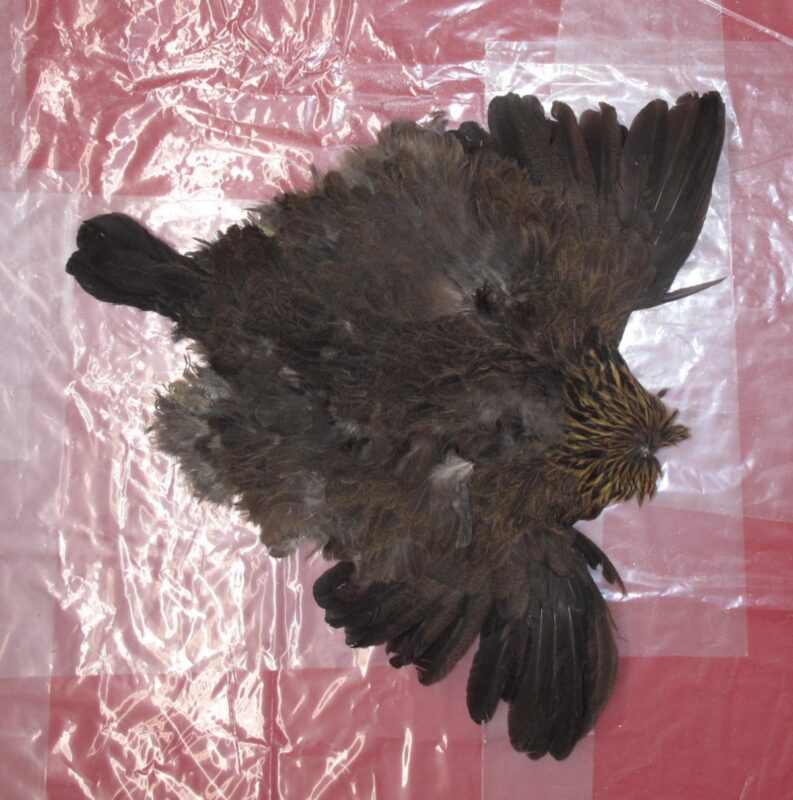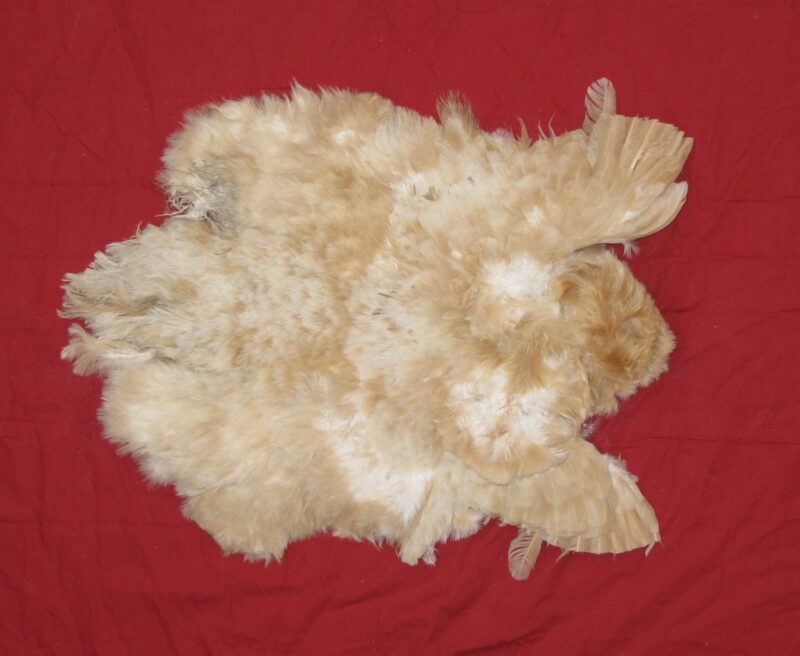Fly Tying Materials to Buy in Person: Hen Hackle Skins
Posted on November 22nd, 2021
As a commercial fly tier and outfitter, I have commercial accounts with most of the major fly tying materials distributors. I’m not allowed to talk about my discounts, specifically, but they are substantial. Flies you buy from me or from Parks’ Fly Shop would cost you twice as much, otherwise.
That said, there are still several materials I am willing to buy at full-price or very close to it, either from a fly shop or some alternate source. This is the first in a series of posts about these materials, and why they’re worth it for me to spend a lot more on them.
Hen Skins for Soft Hackles
The first material I usually buy at full price, and the one on which I probably spend the most, is hen chicken skins for soft hackles (and to a lesser extent streamers). I also buy many other bird skins for soft hackles at full price, such as hen pheasant skins, but chicken skins are by far the most important.
There’s a simple reason why I pay full price for these skins: I can pick through them and get EXACTLY the coloration I want. If I bought these skins from large wholesale distributors, I’d be dealing with the luck of the draw. I’d get whatever the person responsible for packing my order happened to grab.

Lots of soft hackle pheasant tails on this skin…
In the past, I got most of my hen skins exactly this way. At the time, I used a lot of Speckled India Hen Backs, mostly purchased from wholesaler Hareline Dubbing. These are wonderful products, available in a wide range of colors. The problem is that when I ordered half a dozen “brown” skins, say, I would get three that were dark brown with black bars, two that were almost entirely brown, and one that was medium brown with abundant random black speckles. Since I usually wanted the medium brown skins with abundant black speckles, the others largely went to waste (or I sold them).
A better option was to buy skins either in person or when I could see photos of the skin I was buying. This is possible with India Hen Backs, as many shops sell them. For my own purposes, since I need many more feathers than one skin can provide, I turned to furriers online.
I am going to be a bit of a jerk here and not give the website I most often use for these skins. They don’t sell all that many, and I use a lot of hen skins for soft hackles, streamers, collars on Woolly Buggers (such as my PT-Bugger), and legs and tails on nymphs. Instead I’ll point you towards eBay. A wide range of chicken (and other bird) skins are available. You just have to keep searching for what you want. Search for hen skin, hen pelt, chicken pelt, bird skin, or other similar search terms.

Pale hen skin for tying caddis emergers.
Top Winter Dry Fly – Parachute Midge Emerger
Posted on November 12th, 2021
Here’s a blast from the past that still works well. The Parachute Midge Emerger, along with something like a #18 Purple Hazy Cripple, should be your go-to dry fly when you see midges hatching on late fall and winter afternoons. This is my top winter dry fly just about everywhere: spring creeks, tailwaters, and the mighty Yellowstone itself. Hang an unweighted thread midge or WD-40 nymph under the emerger.
Recipe
Hook: Standard or short-shank dry fly, #14-22.
Thread: 8/0 or smaller black, or to match the fly body color.
Wing: White Widow’s Web or similar synthetic.
Rib: Pearl Midge Krystal Flash.
Hackle: Grizzly saddle.
Hoot Owl Restrictions Start at 2:00PM, Wednesday 7-21-21
Posted on July 21st, 2021
We knew it’d happen. This summer’s extreme heat and drought just caused Montana FWP to shut down afternoon and evening fishing on the Yellowstone, lower Stillwater, Madison, and most of the Missouri starting tomorrow. We agree with this decision. It should be extended to large, famous waters in Yellowstone Park, as well.
This obviously puts a damper on our guiding. Here are remaining options:
- Morning half-day float trips on the Yellowstone River; for floats, this is probably our preferred option now.
- Full-day floats meeting no later than 6:00AM.
- Half-day and full-day walk-wade trips in Yellowstone Park; again, half-days are probably a better bet, though we can make a full-day work by sticking to small mountain streams in the afternoon.
- Full-day walk-wade trips in Montana: Basically these trips would be limited to the upper Stillwater.
- Walk-float combos: Another good option, though availability is limited. We’ll float early, then wade fish a small mountain stream in Montana later.
Do your rain dance, folks.
Here’s the full news release from FWP:
High temps prompt additional fishing restrictions on several Montana rivers
HELENA – Several angling restrictions on rivers in southwest, north-central and south-central Montana go into effect today due to warming temperatures and low flows.
The restrictions include what are commonly known as “hoot owl” restrictions, which means fishing is closed from 2 p.m. to midnight each day. Some waters are under full fishing closures, which prohibit fishing at all times of day. These closures and restrictions will stay in effect until conditions improve.
The following closure went into effect today:
- A full fishing closure for portions of the Shields River from the confluence with Yellowstone River to USFS Crandal Creek Bridge.
These closures go into effect, Wednesday, July 21, at 12:01 a.m.:
- A full fishing closure for portions of the Big Hole River from the confluence with the Beaverhead River to Tony Schoonen Fishing Access Site.
- A full fishing closure for portions of the Gallatin River from the mouth to Hwy 84 Crossing.
- A full fishing closure for the entire Jefferson River.
These restrictions go into effect, Wednesday, July 21, at 2 p.m.:
- Hoot owl restrictions for the entire reach of the Madison River from the mouth to the boundary with Yellowstone National Park.
- Hoot owl restrictions for portions of the Beaverhead River from the mouth to State Highway 91 South.
- Hoot owl restrictions for portions of the Missouri River from Town of Cascade Boat Ramp to Holter Dam.
- Hoot owl restrictions for portions of the Stillwater River from the confluence with Yellowstone River to Absaroka Fishing Access Site.
- Hoot owl restrictions for portions of the Yellowstone River Hwy 212 Bridge in Laurel to Yellowstone National Park boundary.
Montana Fish, Wildlife & Parks’ drought policy provides for angling closures when flows drop below critical levels for fish, when water quality is diminished, or when maximum daily water temperatures reach at least 73 degrees for three consecutive days. Warm and dry conditions are expected to continue during the coming weeks.